George Grosz Biography
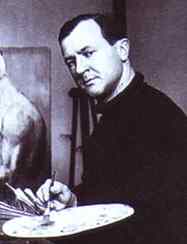
Georg Ehrenfried Gross was born on 26 July 1893 in Berlin into the family of Karl Ehrenfried Gross, an innkeeper, and his wife Marie Wilhelmine Luise. When the boy was only seven years old his father died. Together with his mother he lived alternately in Berlin and Stolp in Pomerania, where Georg started secondary school in 1902. In 1908 he was expelled from school for having returned a trainee teacher's blow.
After passing the entrance exam he began his studies at the Royal Academy of Art in Dresden. While in the Academy he specialized in graphic art and started to co-operate with satirical magazines as early as 1910. In 1912 Grosz (then Gross) joined the graphic art course at the College of Arts and Crafts in Berlin. In 1913 he spent several months in Paris at Colarossi's studio. The main subjects of his drawings of the period are crimes and orgies, erotic subjects; his cartoons find publication in "Ulk", "Lustige Blätter" and other periodicals. He also did his first book illustrations and began painting in oils.
With the outbreak of the First World War he volunteered, but was discharged from the army several months later following a surgical operation. During this period in Berlin Gross met various authors, artists and intellectuals, among them those with whom he would found the Berlin Dada in 1917.
In 1916 the artist in protest against nationalism and patriotism altered his name to George Grosz. The same year he painted the earliest of his oils known, among them Lovesick and Suicide and a year later he published his first two albums, the "Erste George Grosz Mappe" and "Kleine Grosz Mappe".
Following the revolution in Russia, an artists' association, the "November Group" was established in Berlin in 1918, and Grosz joined it, soon after becoming a member of the Communist Party. In 1919, with the publisher Wieland Herzfelde (of Malik Publishing House), he started a magazine called "Die Pleite", and collaborated with Franz Jung on "Jedermann sein eigener Fussball" (Everybody his own football) and with John Hoexter and Carl Einstein on "Der blutige Ernst" (The bloody seriousness). His drawings, tartly critical of bourgeois society, appeared in various Malik publications; the artist also produced portfolios and books, which regularly aroused scandals.
In 1921 his album "Gott mit uns" (God with us) brought Grosz charges of defaming the Reichswehr (army); in 1924 he was prosecuted for offences against public morality by his album "Ecce Homo" (the album was confiscated as being pornographic); in 1928 for his drawing "Shut up and keep serving the cause" he was accused of blasphemy. All these scandals only helped consolidate his fame.
In 1924 the artist became chairman of the artists' association "Rote Gruppe" (Red Group); until 1927 he was a regular contributor to Communist publications. In 1928 he was co-founder of the "Association Revolutionärer Bildender Künstler Deutschlands" (German Association of Revolutionary Artists).
Grosz's works of the 1920s were influenced by a complicated political and economical situation in the post-war Germany and Europe and in one sentence can be characterized as political and social satire. He himself wrote about that time: "Everywhere, hymns of hatred were struck up. Everyone was hated: the Jews, the capitalists, the Junkers, the Communists, the army, the property owners, the workers, the unemployed, the black Reichwehr, the control commissions, the politicians, the department stores, and the Jews again. It was an orgy of incitement, and the republic itself was a weak thing, scarcely perceptible. … It was a completely negative world, topped with colorful froth that many imagined to be true, happy Germany before the onset of the new barbarism." p 53
In 1932, invited to lecture to the Arts Student League in NY, Grosz visited the USA, and the following year emigrated there together with his wife and two sons. In the USA he resumed teaching with the Art Students League in NY. In the USA both his works and behavior changed radically – no more attacks on society, the artist's commitment to the class struggle was gone. This resignation was not sincere; in his autobiography, "Ein kleiness Ja und ein Grosses Nein" (A Small Yes and a Big No), Grosz later wrote: "My motto was now to give offence to none and be pleasing to all. Assimilation is straightforward once one overcomes the greatly overvalued superstition concerning character. To have character generally means that one is distinctly inflexible, not necessarily for reasons of age. Anyone who plans to get ahead and make money would do well to have no character at all. The second rule for fitting in is to think everything beautiful! Everything – that is to say, including things that are not beautiful in reality."
Only once he lost control, when he learnt about the death of a friend in a concentration camp. He published anti-fascist album "Interregnum", which was not a success, moreover met criticism, since Americans did not see any danger in fascism at the time and the artist's pictures seemed an absurd exaggeration.
Grosz taught at the Art Students League till 1936. He also had a private art school, his students were mainly society ladies. From 1937 to 1939 he was the recipient of a Guggenheim fellowship, which enabled him to devote time to his own work. He was not rich, but he got by comfortably. In 1938 Grosz was stripped of his German citizenship, numerous of his works
were burnt by the Nazis.
On the whole Grosz's artistic works during his American period are not very interesting. Of more importance maybe his teaching activities and the autobiography "A Little Yes and Big No" published in 1946. In 1954 Grosz was elected to the American Academy of Arts and Letters and in 1958 to the Academy of Fine Arts of Germany. His last works in America were collages, which partly recall his Dada period and partly were influenced by Pop Art.
In 1959 Grosz returned to Berlin for good, and only a month later he died there, in his house.
Bibliography
George Grosz: Leben und Werk by U.M. Scheede. 1975. Stuttgart.
George Grosz. By H. Hess. 1982. Dresden.
Painting of Europe. XIII-XX centuries. Encyclopedic Dictionary. Iskusstvo. 1999.
George Grosz by Ivo Kranzfelder, George Grosz. TASCHEN America Llc, 1994.
George Grosz: Berlin-New York by Peter-Klaus Schuster (Editor), George Grosz (Artist), Alexander Duckers, Helen Adkins (Contributor), Irwin Lewis (Contributor). Distributed Art Publishers, 1996.
The Berlin of George Grosz: Drawings, Watercolours and Prints 1912-1930 by George Grosz, Antony Wood (Editor), Frank Whitford (Editor). Yale Univ Pr, 1997.
Ecce Homo by George Grosz. Dover Pubns, 1977.
George Grosz: Art and Politics in the Weimar Republic by Beth Irwin Lewis. Princeton Univ Pr, 1991.
George Grosz: An Autobiography by George Grosz, Nora Hodges (Translator), Barbara McCloskey. University of California Press, 1998.
George Grosz and the Communist Party by Barbara McCloskey. Princeton Univ Pr, 1997.
- Lovesick.
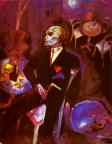
1916. Oil on canvas. 99.7 x 76.5 cm. Private collection.
- Suicide.
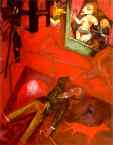
1916. Oil on canvas. 100 x 77.6 cm. Tate Gallery, London, UK.
- The City.
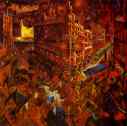
1916-17. Oil on canvas. 100 x 102 cm. Thyssen-Bornemisza Collection, Madrid, Spain.
- Explosion.
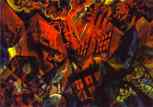
1917. Oil on hardboard. 47.8 x 68.2 cm. The Museum of Modern Arts, New York, NY, USA.
- To Oskar Panizza.
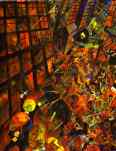
1917-18. Oil on canvas. 140 x 110 cm. Staatsgalerie Stuttgart, Stuttgart, Germany.
- Germany: A Winter's Tale.
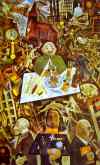
1917-19. Oil on canvas. Whereabouts unknown.